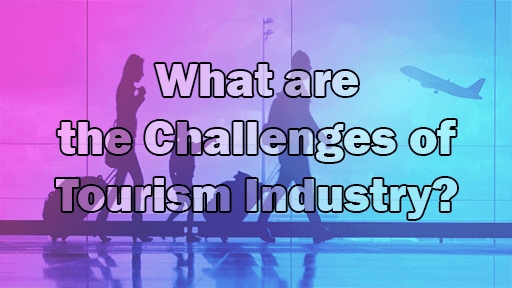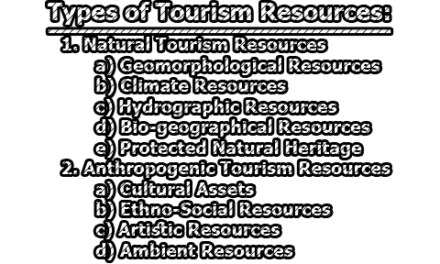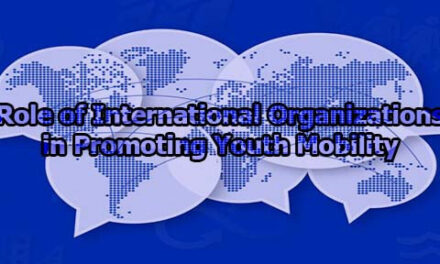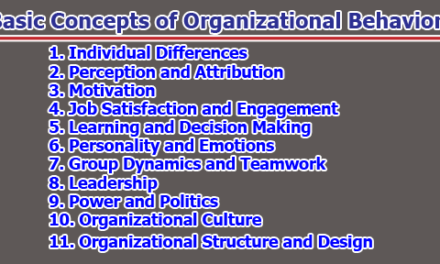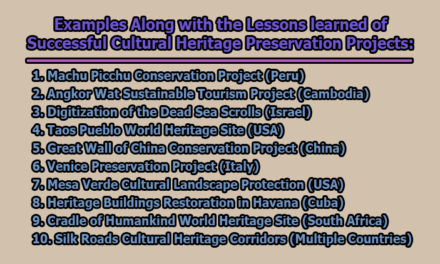What are the Challenges of Tourism Industry?
The global tourism industry, a vital economic driver and cultural exchange platform, has undergone unprecedented growth in recent decades. As millions of travelers explore new destinations, the industry’s significance is undeniable. However, beneath the surface of its success lie numerous challenges that demand attention and strategic solutions. This article delves into the following question “what are the challenges of tourism industry?”
1. Environmental Impact: One of the most pressing challenges facing the tourism industry is its substantial environmental footprint. As millions of travelers crisscross the globe, their collective activities contribute to carbon emissions, increased waste generation, and ecological degradation. Air travel, in particular, is a major contributor to greenhouse gas emissions, exacerbating climate change.
Addressing this challenge requires a paradigm shift towards sustainable tourism practices. Encouraging the use of eco-friendly transportation, implementing waste reduction measures, and promoting conservation initiatives are essential steps. Additionally, destinations can adopt sustainable certification programs to guide tourists toward environmentally responsible choices, fostering a sense of responsibility among travelers.
2. Overcrowding: While the allure of iconic destinations is undeniable, the detrimental effects of overcrowding are becoming increasingly evident. Popular tourist hotspots often experience a surge in visitor numbers that surpass their carrying capacity, leading to environmental strain, cultural erosion, and a decline in the overall visitor experience.
Effective management strategies are crucial to strike a balance between the economic benefits of tourism and the preservation of natural and cultural assets. Implementing visitor quotas, promoting off-peak travel, and investing in infrastructure that can withstand high volumes are measures that can mitigate the impact of overcrowding.
3. Infrastructure Strain: The influx of tourists can place immense strain on local infrastructure, from transportation systems to accommodation facilities and public services. Insufficient infrastructure not only hampers the visitor experience but also poses risks to the safety and well-being of both tourists and locals.
Strategic planning and sustainable development are imperative to address this challenge. Destination management organizations must collaborate with local governments and private sectors to identify infrastructure gaps, invest in upgrades, and implement smart solutions that enhance capacity without compromising the destination’s authenticity.
4. Economic Dependence: Many regions across the globe heavily depend on tourism as a primary source of income. While tourism can provide economic stability, it also leaves these destinations vulnerable to external shocks, such as economic downturns, natural disasters, or global health crises.
Diversification of the local economy is crucial to mitigate the risks associated with overreliance on tourism. Supporting the development of alternative industries, such as agriculture, technology, or sustainable manufacturing, can create a more resilient economic foundation for these regions.
5. Cultural Homogenization: The influx of tourists can lead to the commodification and dilution of local cultures, eroding the authenticity of destinations. In some cases, the quest to cater to tourist expectations may result in the transformation of once-vibrant cultural practices into mere spectacles for commercial gain.
Preserving and celebrating cultural diversity requires a delicate balance. Implementing responsible tourism practices, fostering cultural education programs, and actively involving local communities in tourism planning can help maintain the integrity of cultural heritage while allowing for sustainable tourism development.
6. Safety and Security Concerns: Tourism is highly sensitive to safety and security concerns, ranging from geopolitical instability to natural disasters and health emergencies. Instances of terrorism, political unrest, or even isolated criminal activities can significantly impact the perception of a destination, deterring potential travelers.
To address safety concerns, destinations must prioritize effective risk management and crisis response plans. Cooperation between governments, local authorities, and the tourism industry is essential. Transparent communication, timely updates, and stringent security measures can help rebuild trust and ensure the safety of both tourists and locals.
7. Digital Disruption: The advent of digital technologies has transformed the way people plan, book, and experience travel. While online platforms have made travel more accessible, they also present challenges to traditional tourism models. The rise of peer-to-peer services, online travel agencies, and price-comparison websites has increased market saturation and intensified competition.
Adapting to the digital landscape is crucial for businesses in the tourism sector. Establishing a strong online presence, leveraging data analytics for personalized marketing, and embracing digital innovation can enhance competitiveness and resilience in the face of evolving consumer behaviors.
8. Regulatory Challenges: The tourism industry operates in a complex regulatory environment, with varying visa requirements, safety standards, and taxation policies across different destinations. This regulatory diversity can create challenges for both businesses and travelers, impacting the efficiency and ease of travel.
Harmonizing regulations on an international scale is a formidable task, but it is essential for streamlining processes and fostering a more accessible and secure tourism experience. Collaboration between governments, international organizations, and the private sector is key to addressing these regulatory challenges.
9. Changing Consumer Behavior: Consumer preferences in the tourism sector are constantly evolving, influenced by factors such as sustainability, authenticity, and experiential travel. Travelers increasingly seek unique, immersive experiences that align with their values, challenging traditional tourism offerings.
To meet these changing demands, the industry must pivot towards sustainable and responsible practices. Businesses need to prioritize environmental conservation, promote cultural authenticity, and cater to the growing demand for experiential travel. Understanding and adapting to these shifts in consumer behavior will be critical for long-term success.
10. Global Health Crises: The COVID-19 pandemic highlighted the vulnerability of the tourism industry to global health crises. Travel restrictions, lockdowns, and health concerns drastically reduced international travel, leading to economic losses and widespread disruptions.
Preparedness for health emergencies is now a top priority for the tourism sector. Implementing robust health and safety protocols, investing in crisis management plans, and collaborating with health authorities are essential measures to navigate the challenges posed by pandemics and other health crises.
11. Social Media Influences: The power of social media in shaping travel trends is undeniable, with platforms like Instagram, Facebook, and Twitter influencing destination choices and travel behaviors. While social media can boost the popularity of destinations, it also contributes to over-tourism and can create unrealistic expectations for both travelers and destinations.
Managing the impact of social media requires a balanced approach. Destinations must leverage these platforms for positive promotion while actively addressing issues of over-tourism. Responsible marketing campaigns, community engagement, and the promotion of off-the-beaten-path destinations can help mitigate the negative consequences of social media influences.
12. Overtourism: Overtourism, characterized by an excessive number of tourists overwhelming a destination, is a critical challenge affecting both popular and emerging travel hotspots. It leads to environmental degradation, strained infrastructure, and a decline in the quality of life for local residents.
To combat overtourism, destinations must adopt sustainable tourism practices. Implementing visitor caps, diversifying tourism offerings, and encouraging responsible traveler behavior can help strike a balance between economic benefits and environmental preservation.
13. Seasonal Imbalances: Many destinations experience seasonal imbalances, with peak tourism periods creating overcrowding and off-peak seasons resulting in economic challenges. Seasonal imbalances can strain local resources and negatively impact the livelihoods of those dependent on tourism.
Addressing seasonal imbalances requires innovative strategies. Destinations can invest in marketing campaigns promoting off-peak travel, develop attractions and events to attract visitors during slower periods, and offer incentives for businesses to operate year-round. This approach contributes to a more sustainable and evenly distributed tourism flow.
14. Lack of Local Involvement: In some instances, local communities may feel excluded from or even marginalized by tourism development. The failure to involve local residents in decision-making processes can lead to social tensions, resistance, and a lack of support for tourism initiatives.
To address this challenge, destination management organizations and businesses should prioritize community engagement. Consulting with local residents, incorporating their perspectives into tourism planning, and ensuring that economic benefits are distributed equitably can foster a sense of ownership and mutual benefit.
15. Technological Adaptation: The rapid advancement of technology brings both opportunities and challenges to the tourism industry. While technological innovations enhance efficiency, improve customer experiences, and streamline operations, businesses must adapt to stay competitive.
Embracing technologies such as artificial intelligence, virtual reality, and smart tourism solutions can provide a competitive edge. From personalized marketing strategies to contactless services, technological adaptation ensures that the tourism industry remains at the forefront of innovation, meeting the evolving needs of modern travelers.
16. Natural Disasters: Destinations prone to natural disasters, such as earthquakes, hurricanes, or tsunamis, face a unique set of challenges within the tourism industry. These events can lead to disruptions in travel plans, damage to infrastructure, and safety concerns for both tourists and locals.
To address this challenge, destinations must invest in robust disaster preparedness and response plans. Early warning systems, evacuation procedures, and infrastructure resilience are vital components of ensuring the safety of visitors and maintaining the destination’s appeal even in the face of unforeseen natural events.
17. Supply Chain Vulnerability: The tourism industry is intricately connected with global supply chains, from transportation to hospitality services. Disruptions in one region, whether due to geopolitical events, natural disasters, or health crises, can have cascading effects on the entire tourism sector.
Developing resilient and flexible supply chains is imperative. Diversifying sources, adopting digital solutions for supply chain management, and establishing contingency plans can help mitigate the impact of disruptions, ensuring a more stable and adaptable tourism ecosystem.
18. Skill Shortages: The tourism industry often grapples with skill shortages in various areas, from hospitality and customer service to sustainable tourism management. The evolving nature of the industry and the need for specialized expertise present ongoing challenges.
Investing in education and training programs is crucial to address skill shortages. Collaborations between educational institutions, government bodies, and the private sector can create pathways for individuals to acquire the skills needed for diverse roles within the tourism industry, ultimately fostering a more capable workforce.
19. Ethical Wildlife Tourism: The ethical treatment of wildlife in tourism activities is gaining increasing attention. Exploitative practices, such as animal performances, inadequate living conditions, and wildlife trafficking, pose ethical dilemmas and can harm the reputation of destinations.
Promoting ethical wildlife tourism involves establishing guidelines, enforcing regulations, and encouraging responsible traveler behavior. Destinations can prioritize wildlife conservation, support sanctuaries and rehabilitation centers, and educate tourists about the importance of respecting and protecting local fauna.
20. Climate Change Impact: Climate change poses a long-term and existential threat to the tourism industry. Rising sea levels, extreme weather events, and shifts in natural landscapes can have profound effects on the attractiveness and accessibility of destinations.
Adapting to climate change involves a dual approach of mitigation and resilience. Sustainable tourism practices that reduce carbon footprints, coupled with measures to protect vulnerable ecosystems, are essential. Collaboration with local communities and governments to implement climate-resilient infrastructure and policies is critical to safeguard the industry’s future.
In conclusion, the challenges facing the tourism industry are diverse and complex, requiring a multifaceted and collaborative approach for effective resolution. From environmental sustainability and cultural preservation to technological adaptation and crisis management, the industry must navigate these hurdles with resilience, innovation, and a commitment to responsible practices. By addressing these challenges head-on, the tourism industry can continue to thrive, providing enriching experiences for travelers while contributing positively to the communities and environments they visit.

Library Lecturer at Nurul Amin Degree College

